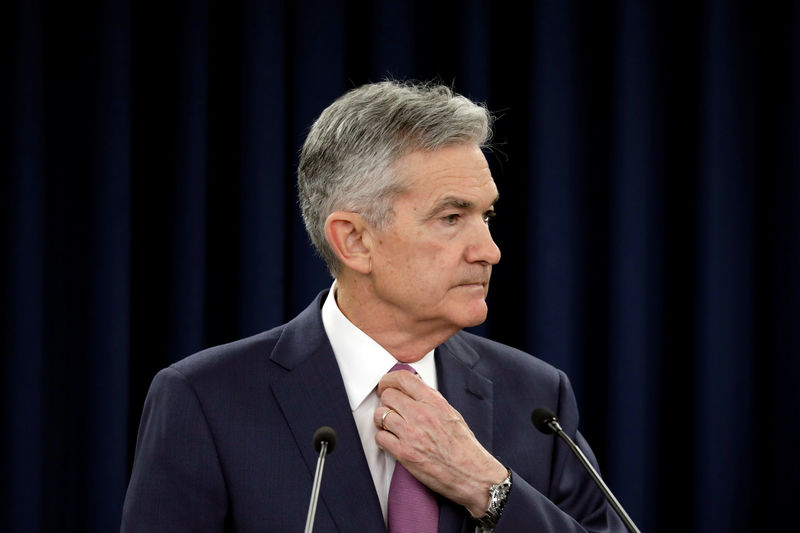Raytheon awarded $71 million in Navy contracts for missile systems
(Bloomberg) -- A week ago, Jerome Powell signaled the Federal Reserve’s first rate cut in a decade put markets in a position to help keep the economy healthy. Investors would like a word with the chairman.
Powell said at the central bank’s July meeting that the prospect of interest rates going lower than had been anticipated “eased financial conditions” and “supported the economy.’’ Then President Donald Trump escalated the trade war, sending stocks into a tailspin and sparking one of the biggest bond rallies in years.
The result has been a tightening of financial conditions to such an extent that the Fed’s latest bout of easing has been badly diminished. Going by Goldman Sachs Group Inc (NYSE:GS).’s index that measures stress based on the levels of the dollar, stock prices, credit spreads and Treasury yields rose, Monday’s rout in risk assets was so sharp that it amounted to roughly half as much tightening as would be expected by a 25 basis-point rate increase.
For a Fed intent on bolstering markets to aid the U.S. economy, the escalating U.S.-China trade war and the lingering effects of past policy moves suggest the central bank may have fallen behind.
“The growth outlook, up until recently, was supported by the Fed cutting rates in the face of elevated headwinds,’’ said Skanda Amarnath, director of research and analysis at Employ America. “Those growth headwinds have since increased and the Fed should adjust its policy path accordingly to keep financial conditions supportive of the growth outlook.”
Bond traders now anticipate the Fed will trim rates again at its next meeting in September, and are assigning significant odds to a 50-basis point reduction. Earlier Wednesday, unexpected easing from central banks in New Zealand, Thailand and India added to calls for the American central bank to keep pace with the new global policy regime.
And yet, one of the U.S. central bank’s biggest doves and a vocal hawk appear to have implied or explicitly stated that market conditions won’t -- or shouldn’t -- ease by as much as bond traders reckon.
St. Louis Fed President James Bullard told reporters on Tuesday that he believes only one more interest rate reduction this year is appropriate, in contrast to market expectations for two more at that time. His outlook has “not changed dramatically from June,” the regional bank president added.
Meanwhile, Boston Fed President Eric Rosengren delivered a dissent in which he suggested that the relatively low cost of credit and high stock prices meant financial stability worries were elevated, so the central bank should not deliver more accommodation. While Bullard is “sympathetic” to his colleague’s concerns, he doesn’t think that financial stability concerns constrain the Fed at this juncture.
“If financial conditions are the primary driver of how the Fed impacts the economy, then Bullard’s comments are very bad for risk assets,’’ said Dennis DeBusschere, head of portfolio strategy at Evercore ISI. “Despite the collapse in financial conditions, he is implying that financial conditions are still too easy, which is a problem when you are attempting to hit an inflation target, into a slowing economy, that has been missed for 10+ years.”
